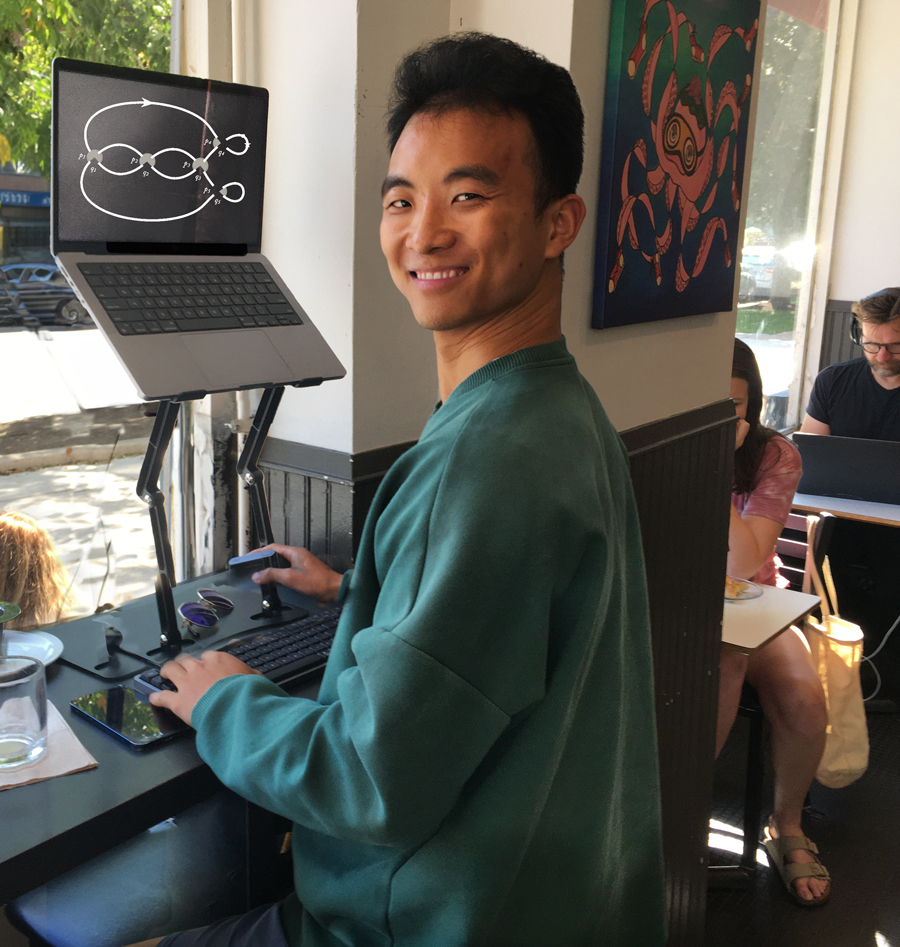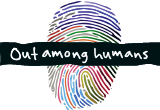People at a coffee shop Slip knots, square knots, Windsors and all manner of Boy Scout knots are actually not knots at all. To mathematicians like Zhenyi, a ‘knot’ is a very specific phenomenon, a continuous circle, a ring with no openings. Rubber bands, wedding rings and fan belts qualify as knots. So do the tangles found in your DNA molecules.
Slip knots, square knots, Windsors and all manner of Boy Scout knots are actually not knots at all. To mathematicians like Zhenyi, a ‘knot’ is a very specific phenomenon, a continuous circle, a ring with no openings. Rubber bands, wedding rings and fan belts qualify as knots. So do the tangles found in your DNA molecules.
Give a ring a half twist and you have a figure eight. Wrap it around your fingers and you create a cat’s cradle which can be changed into any number of playful knots.
Since the beginnings of Knot Theory in the 1800s, mathematicians have classified and tabulated all prime knots of up to 16 crossings and more than 6 billion other variations. The configuration on Zhenyi’s screen is the Legendrian trefoil knot.
Different-looking knots may actually be the same one in disguise. Proving or disproving ‘equivalence’ is part of what gets Zhenyi out of bed in the morning.
His work is “pure” mathematics, however much of scholarship once considered “pure” has found applications later. Non-Euclidean geometry became the foundation of Einstein’s Theory of Relativity.
Along with the elegance of the math, Zhenyi is fascinated by the labyrinthine calligraphy and knot motifs that have graced manuscripts and mosques for millennia.
He’ll soon submit his findings to pre-publication review and then beyond that to formal peer review journals. So the intense, young man who works standing upright in the windows of our coffee shop will be standing there for at least some part of another year. ![]()

Tom Figel
Very interesting, Pat. Good luck to the bright young mathematician, a coffee-fueled one.
Scott Pemberton
Another fascinating profile of a Bros K devotee. Thanks for helping us to better understand and appreciate the vibrancy of the Southeast Evanston neighborhood. Very nice photo, too!
Pat Shiplett
Thanks, Scot.